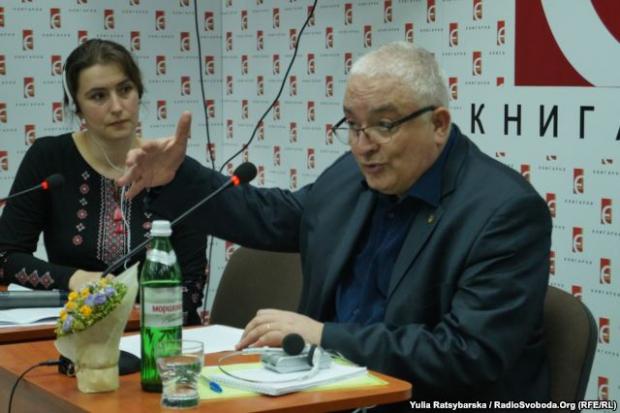The nationalization on December 18 of Privatbank, Ukraine’s largest bank by assets, opens a new and promising chapter in the reform of Ukraine.
Privatbank’s nationalization due to a slow boiling insolvency crisis that threatened to undermine Ukraine’s financial system was a necessary and overdue measure to stabilize Ukraine’s financial system given the size of Privatbank, which holds about 20% (or US$10.3 b) of Ukraine’s banking assets, even if it’s recapitalization puts additional pressure on the national budget. The cost to the state of nationalization will be partially offset through a “bail-in” of bondholders, but the principal burden will still fall on taxpayers.
Read more: Nationalization of PrivatBank, Ukraine's largest bank, explained
The public guarantee of Privatbank’s deposits, amounting to about a third of all total Ukrainian deposits, was also necessary to prevent a run on the bank. The other two systemically important banks identified by the Ukrainian Treasury--Oschadbank and Ukreximbank--are already government owned.
As detailed in several blistering articles in BNE Intellinews (including here and here
), Privatbank’s owners, oligarchs Ihor Kolomoiskyi and Hennadiy Boholyubov, used the bank, as BNE describes it, to “vacuum up” ordinary Ukrainian’s savings and use those savings as collateral to obtain loans for themselves and other closely related parties. BNE reports,
“The National Bank of Ukraine (NBU) found that a massive 97% of the bank’s loans had been made to shell companies, many of them offshore, that are believed to be owned by the bank’s oligarch owners.” BNE estimates that “around 90% of the Privatbank loan book comprises loans to related parties, mostly shell firms linked to the [Kolomoisky’s] fuel trading business.”
Much of the money that left Privatbank was transferred overseas, enabled by correspondent banks Austria and Luxemburg, as well as intermediaries in Cyprus and shell companies in the UK. Without the help of institutions and individuals in developed countries, the drain on the Ukrainian financial system could not have taken place, once again highlighting the role of the developed world in enabling corruption in the developing world. The offshore correspondent banks were often not shady fly-by-night financial institutions, but venerable banks, such as the Vienna’s Bank Winter that has operated as a private wealth management bank since 1892. How the scheme to transfer Ukrainian wealth offshore worked is worth quoting from BNE;
“The back-to-back funding scheme worked thus: Ukrainian banks placed depositors’ funds with the Alpine banks, and the Ukrainian bank shareholders received loans from the Alpine banks using their depositors’ funds as collateral. The shareholders then used at least part of these loans to recapitalize their banks, another part they simply moved offshore.
There is no reason to believe that PrivatBank’s arrangement with the niche Alpine banks was any different to that of around a dozen smaller brethren. Since 2011 up to 10 Ukrainian banks were reportedly involved in a scheme of siphoning of assets, where money was said to be unlawfully withdrawn by the owners and/or insiders of the insolvent Ukrainian banks through correspondent accounts of different banks incorporated in EU.”
With the nationalization of Privatbank, and the closure of over 80 smaller banks over the last couple of years by the National Bank of Ukraine (NBU), as well as tightening of regulations and oversight, led by reformist head Valeriya Hontareva, Ukraine has taken a major step in reforming its financial sector and ensuring its stability. Governance problems remain, including that the four largest banks are now government owned, limiting the opportunity to diversify the financial system and invigorate private sector investment. The four largest banks have assets of about US$25.5 bn and account for about half the banking sector. Ukraine is reported to intend to re-privatize Privatbank but privatization of any government-owned bank may be a long way off. The largest private bank, Raiffeisen Bank Aval, has a capitalization of only US$1.9 bn —a fifth that of Privatbank -- so how to generate sufficient private capital to invest in banking is unclear.
Through schemes such as Privatbank, economic mismanagement and, most importantly, rampant corruption, had catastrophic consequences for the Ukrainian economy and for the Ukrainian people. The control of Ukraine’s financial resources by a small number of individuals, who offshored the gains and invested only to their own business interests limited productive investment in Ukraine and distorted the efficient allocation of capital to the advantage of those few individuals who reaped a disproportionate share of any economic gains. In other words, they stole it.
To be sure, Russian aggression and economic interference have had a devastating impact as well but, in Ukraine’s first 25 years of independence, mismanagement and the capture and transfer of wealth out of Ukraine on the scale seen with Privatbank has been the primary impediment to sustainable economic growth and the distribution of economic benefits to the people of Ukraine. The local criminal with his hand in Ukrainians’ pockets has been more destructive than the neighboring criminal with a gun to Ukraine’s head.
Over the last two years, President Porochenko has delivered stability and the necessary reforms to keep the essential IMF support program from slipping off the rails, but the outlook is shaky for the 2018 elections because he and many others have one foot still lodged in the old school, pre-Maidan oligarch economy.




